Mixed Picture
ChatGPT’s role in translation is neither overwhelmingly useful nor entirely destructive. Its power largely lies in people’s perception of its capabilities. As Stanford Professor Andrew Ng suggests, ChatGPT is more effective as a developer tool than as a standalone solution for generating human-like text.
Translation Capabilities and Limitations
Moderate Usability: ChatGPT excels in modifying and producing moderately usable texts, fitting many translation needs where the usability bar is not too high.
Post-Translation Modification: Using a personalized ChatGPT engine for post-translation modifications, following initial translations by tools like DeepL, produces usable text should a style guide be provided beforehand.
ChatGPT differs from traditional machine translation in that it approaches translation as a prediction task. It predicts the next logical sequence of words, considering context, syntax, and semantics. However, it faces challenges.
ChatGPT for Translation use case: Modify translated text. For Chinese the output is bland but the meaning is there. For English, I have observed that there is a tendency for GPT to use certain verbs and overuse adverbs, which makes it easier to detect if the text is generated or modified by GPT or not.
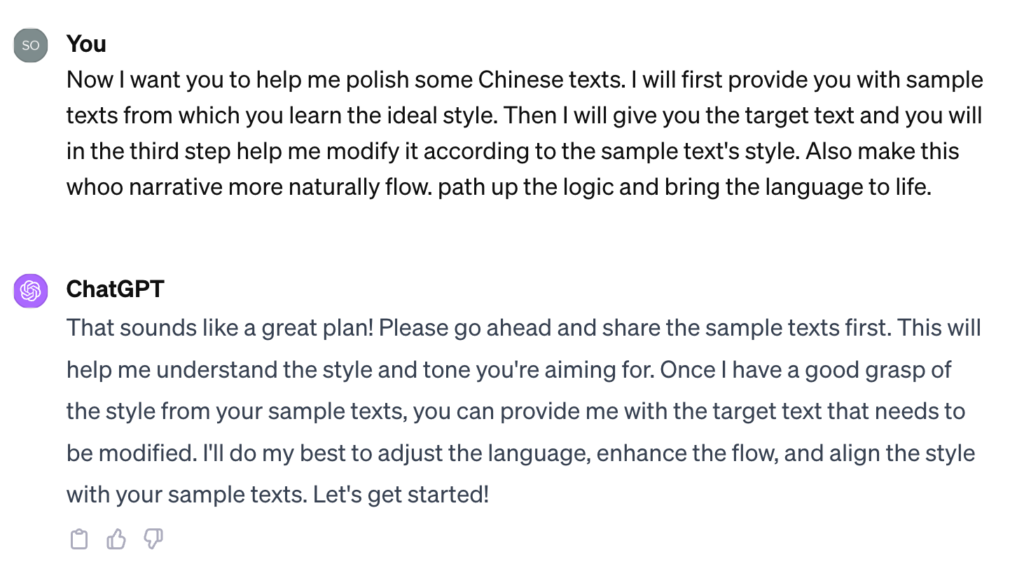
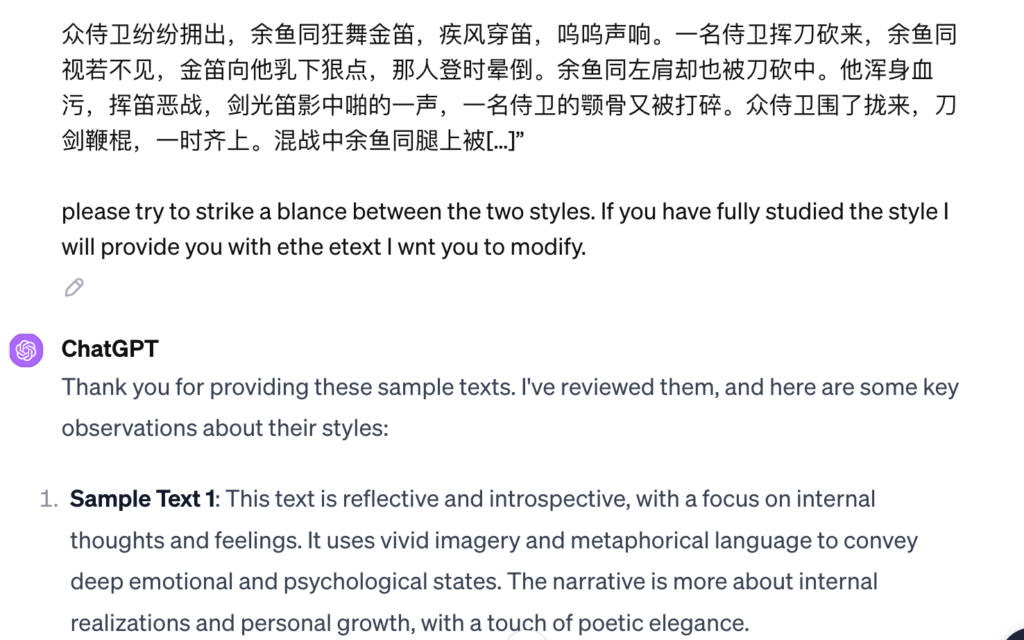
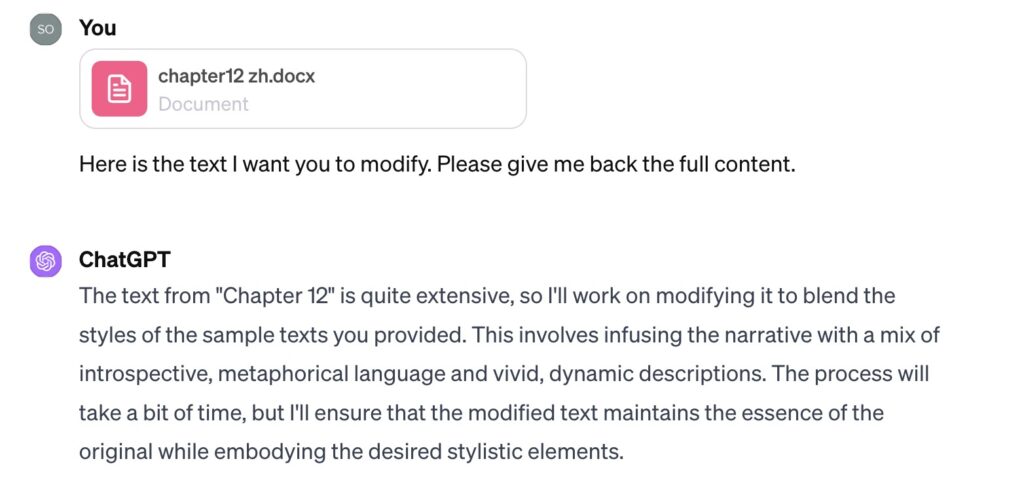
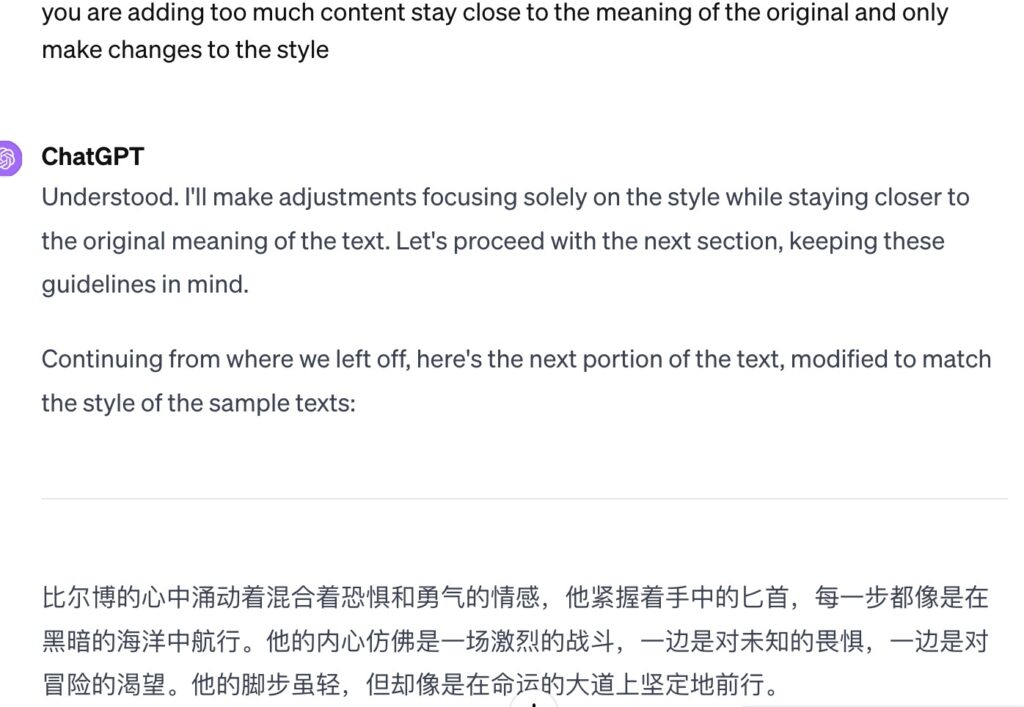

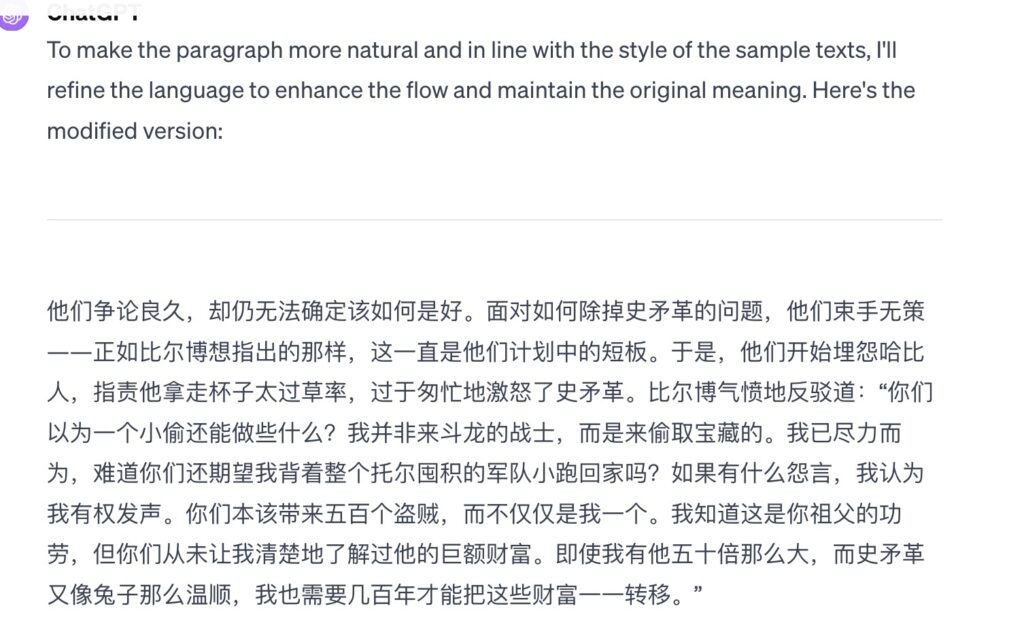
Comparison with Other Tools
Compared with Google Translate and DeepL, ChatGPT struggles with longer texts and most people find DeepL’s translations to be a little bit more natural-sounding which is true for both European and Asian languages.
Compared with domain-specific translation engines: ChatGPT currently lacks the capacity for precise translations required in regulated industries like medicine and law, where content needs extensive adaptation.
Risks
Initially, ChatGPT posed risks of data interception, collecting personal information without confidentiality.
OpenAI now allows users to disable chat history in ChatGPT. However, they still retain data for 30 days for abuse monitoring. So still the corp has a way of reaching into personal data. In the same vein, training a personal GPT-4 model has limitations due to privacy concerns and copyright issues. There’s uncertainty about whether GPT uploads and shares the trained information, hindering commercialization through personalized training.
Ethical Issues: It is still up for debate whether or not machines should be granted copyrights. But in China the first case sentence regarding copyrights for machines has not granted copyrights to AI. See reference here.
ChatGPT’s Challenges
Inaccurate Translations and Biases: ChatGPT can generate inaccurate translations, especially for low-resource languages or those with significant differences from English. It also exhibits biases, as seen when generating humorous texts or images.
Ethical Considerations: The development and use of GPT models raise ethical concerns, including translation bias and potential misuse. This calls for a comprehensive framework for responsible use.
Capacity Limitations: Currently, GPT-4 has certain limitations in generating and managing downloadable files (most of the time it reports [file not found]), such as glossaries or refined translations. Its proficiency in comprehensively analyzing documents also has scope for improvement. Most tasks are executed through text inputs in the chat interface, which, while effective, are restricted by input volume limitations. This delay the process, affecting the overall efficiency.
Personal Experience
The way ChatGPT generates text, particularly in English, showcases certain shortcomings. Its vocabulary often misses the nuances and subtlety that human translators would use. This issue largely stems from ChatGPT’s reliance on expansive databases and predictive algorithms for generating text. It tends to overuse adverbs, lean towards stiff sentence structures, and overuse certain words such as “rich tapestry”, “magic” “eagerly” “certainly” and many more, making the machine-generated text stand out. For example, in a recent assignment, many people from my class including me used ChatGPT for our initial drafts. The professor remarked that our submissions looked quite similar. I couldn’t but think of a future where humans over-rely on machines to the point that all texts are generated and modified by algorithms so that no creative, brilliant, and original texts from humans are added to the database. The limitations in language expressions lead to a breakdown in inspiration and creativity…
Memory Limitations: ChatGPT tends to forget initial instructions after several interactions, affecting its efficiency in continuous tasks.
Real-Time Translation Potential: There is excitement about ChatGPT’s use in real-time translation, such as in meetings. One time, when we were at the fall forum, I could not figure out what my French-speaking neighbor was talking about, so I used voice control for the GPT plugin to do real-time transcription and let ChatGPT translate the result. I compared the translation with what the human interpreter was saying and I found that the differences were not significant, excluding one or two instances of humor and cultural references. Further controlled experiments and observations are needed.

Conclusion
The future of translation with ChatGPT presents a complex landscape. While it offers certain advantages, its current form is no match for human translators’ nuanced, specialized needs, particularly in high-stakes industries. The evolving capabilities of ChatGPT models and their impact on the translation field remain a subject for ongoing observation and debate.
References
Hendy, Amr, et al. “How good are gpt models at machine translation? A comprehensive evaluation.” arXiv preprint arXiv:2302.09210 (2023).
Siu, Sai Cheong. “ChatGPT and GPT-4 for Professional Translators: Exploring the Potential of Large Language Models in Translation.” Available at SSRN 4448091 (2023).
Roberto Navigli, Simone Conia, and Björn Ross. 2023. Biases in Large Language Models: Origins, Inventory, and Discussion. J. Data and Information Quality 15, 2, Article 10 (June 2023), 21 pages. https://doi.org/10.1145/3597307
